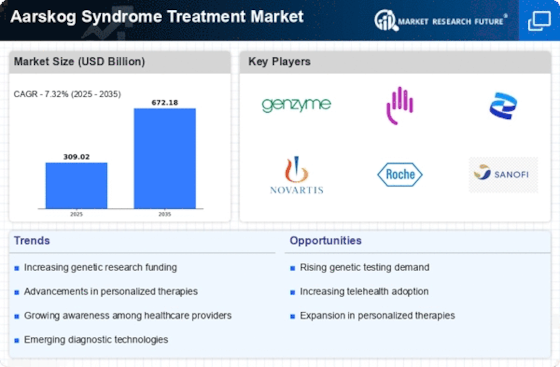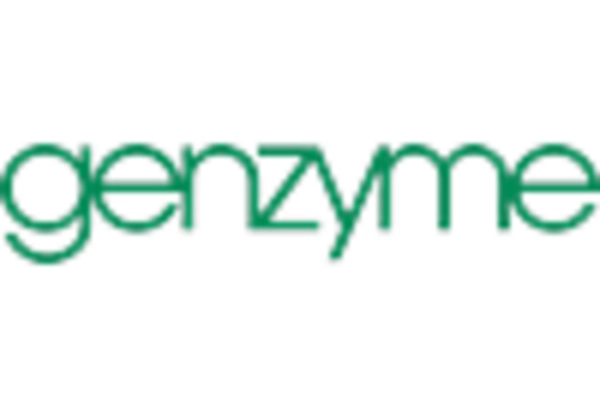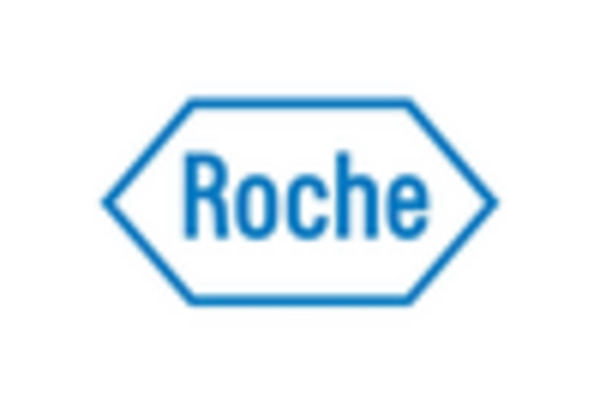Advancements in Genetic Research
Recent advancements in genetic research related to Aarskog Syndrome are likely to play a crucial role in shaping the Aarskog Syndrome Treatment Market. The identification of specific genetic mutations associated with the syndrome has opened new avenues for targeted therapies and interventions. As researchers continue to explore the genetic underpinnings of Aarskog Syndrome, the potential for developing innovative treatment modalities increases. This could lead to a surge in clinical trials and the introduction of novel therapies, thereby enhancing the overall treatment landscape for affected individuals. The market may witness a shift towards precision medicine, aligning treatment strategies with individual genetic profiles.
Increasing Awareness of Aarskog Syndrome
The rising awareness of Aarskog Syndrome among healthcare professionals and the general public appears to be a pivotal driver for the Aarskog Syndrome Treatment Market. Educational campaigns and initiatives by various health organizations have contributed to a better understanding of the syndrome, which is characterized by distinctive facial features, short stature, and skeletal abnormalities. This heightened awareness may lead to earlier diagnosis and intervention, potentially increasing the demand for treatment options. As more individuals become informed about the condition, the market for Aarskog Syndrome treatments is likely to expand, with an emphasis on personalized care and tailored therapeutic strategies.
Regulatory Support for Rare Disease Treatments
Regulatory bodies are increasingly providing support for the development and approval of treatments for rare diseases, including Aarskog Syndrome. This regulatory environment appears to be fostering innovation within the Aarskog Syndrome Treatment Market. Initiatives such as orphan drug designations and expedited review processes may encourage pharmaceutical companies to invest in research and development for Aarskog Syndrome therapies. As a result, the market could see a rise in the number of treatment options available, which may ultimately benefit patients and healthcare providers alike. The favorable regulatory landscape may also attract new entrants into the market, further diversifying treatment options.
Growing Demand for Specialized Healthcare Services
The increasing demand for specialized healthcare services tailored to rare genetic disorders, such as Aarskog Syndrome, is influencing the Aarskog Syndrome Treatment Market. As healthcare systems evolve, there is a noticeable trend towards the establishment of specialized clinics and multidisciplinary teams focused on managing rare conditions. This trend may facilitate improved access to comprehensive care, including genetic counseling, physical therapy, and surgical interventions. The establishment of such specialized services could enhance patient outcomes and satisfaction, thereby driving the market for Aarskog Syndrome treatments. Furthermore, the integration of advanced technologies in these services may lead to more effective treatment protocols.
Collaboration Between Research Institutions and Pharmaceutical Companies
The collaboration between research institutions and pharmaceutical companies is emerging as a significant driver for the Aarskog Syndrome Treatment Market. Such partnerships are likely to enhance the pace of research and development for effective treatments. By pooling resources and expertise, these collaborations may lead to the discovery of novel therapeutic approaches and the optimization of existing treatment modalities. This synergy could result in a more robust pipeline of therapies for Aarskog Syndrome, ultimately benefiting patients through improved access to innovative treatments. The collaborative efforts may also facilitate knowledge sharing, which is essential for advancing the understanding of the syndrome and its management.

















Leave a Comment